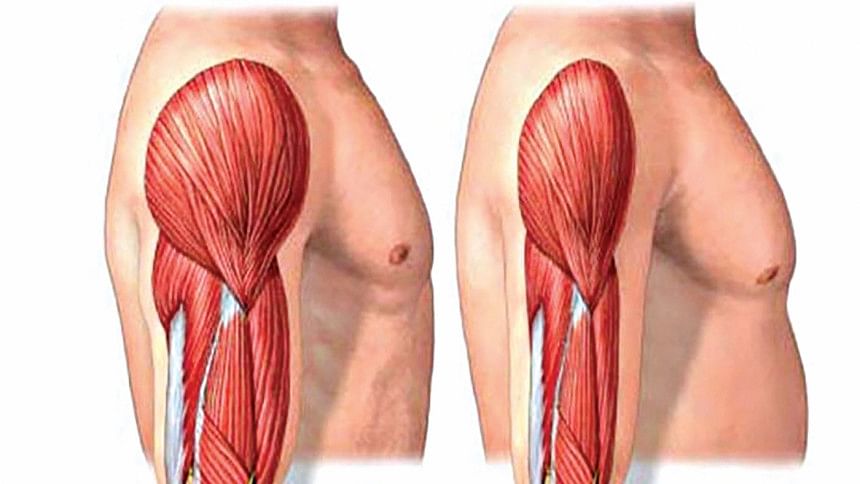What is sarcopenia?

Many ageing people are facing thinning out of their arms and thighs including hip muscles along with a bulging belly, and they look like an orange on a stick. Medically it is called sarcopenia.
Sarcopenia is the loss of both muscle mass and function that occurs with advancing age. It is associated with multiple adverse outcomes, including frailty, disability and death. Older age, female gender and muscle disuse caused by low levels of physical activity or immobility is a well-defined risk factor, less use or no use of muscle result in a decrease in the size of muscle fibres and their total number.
Age related oxidative damage, low-grade chronic inflammation, nutritional factors, changes in the hormonal system are all responsible for the decrease in the size and number of muscle fibres. Sometimes sarcopenia is associated with coexisting diseases like diabetes, muscle diseases (myopathy), thyroid problems, low protein intake, prolonged fastings and overzealous dieting.
Anthropometric measures such as mid-arm circumference and skinfold thickness can help diagnose sarcopenia. Dual-energy x-ray absorptiometry (DEXA Scanning) can also be done. CT scan and MRI are gold standards for estimating muscle mass.
You can prevent sarcopenia by regular physical exercise. Exercise has an impact on both cardiovascular fitness and increasing muscle mass and promoting muscle protein synthesis. Treatment to lower ammonia, hormonal treatment (testosterone), micronutrient supplementation including Vitamin D can also help prevent sarcopenia. Myostatin antagonists have been proven to increased muscle mass. Furthermore, the effect of behavioural and psychological support from the family is also important.
The writer is an Associate Professor of Medicine at
Z H Sikder Women's Medical College and Hospital, Dhaka.

 For all latest news, follow The Daily Star's Google News channel.
For all latest news, follow The Daily Star's Google News channel. 



Comments